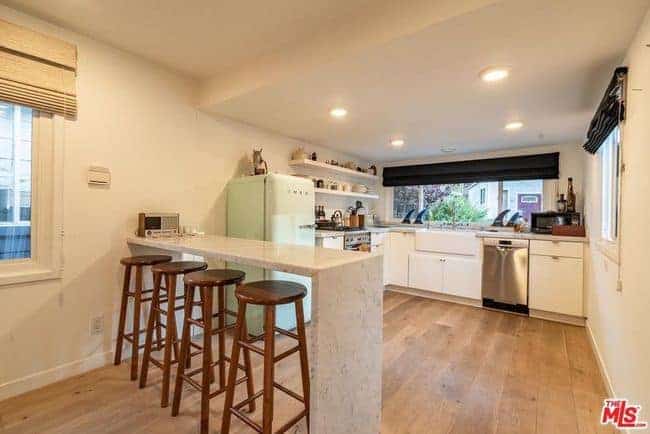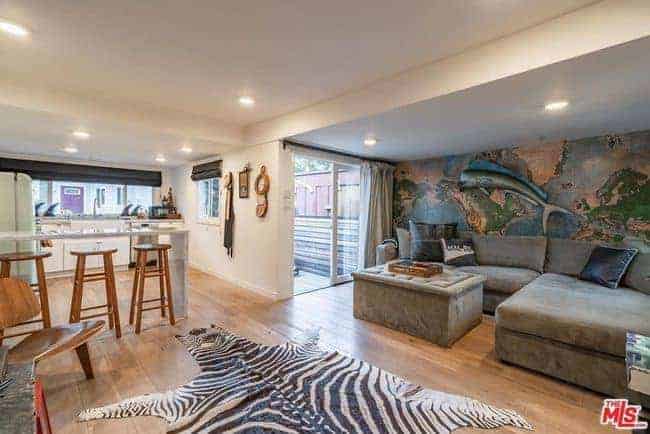California Cities and Counties OK Mobile Home Zoning to Save Affordable Housing Communities from Conversion
Table of Content
The program works implement the development of well-designed ADUs while helping to minimize the impact of population growth on the community by providing more rental housing in the developed core and promoting infill development and sustainable land-use patterns. Through the ADU Development Program, the City of Santa Cruz offers technical and financial assistance including an ADU manual detailing the development process, relevant zoning, design standards, building codes and showcases of ADU prototype designs. The housing element could include a program that commits the local government to amending their zoning and building codes and permitting procedures to facilitate and encourage new SRO construction. A more-streamlined entitlement process helps in providing greater predictability in the approval and development of new SROs. In terms of preservation, local governments could include programs to promote the rehabilitation of older buildings located in appropriate areas.
It must be noted that the term “mobile home” is outdated. Confusion exists between the terms “mobile homes” and “manufactured housing.” In the California law and codes, these terms are used interchangeably. However, the term “manufactured housing” is what the laws and codes actually refer to.
Manufactured Homes and “Just” Zoning Laws can Solve America’s Affordable Housing Crisis
It allows property owners to split a single-family lot into two lots, add a second home to their lot or split their lot into two and place duplexes on each. The last option would create four housing units on a property currently limited to a single-family house. The proposal goes beyond the current rules that require permits to close parks, evidence that the closures won’t cause substantial harm and measures to soften the effect on displaced residents. It essentially bans any other type of housing on property occupied by the 25 parks because the new zone would not allow it. California offers an inviting manufactured home living environment. As with any state, purchasers contemplating installing a manufactured home in California would be best served by understanding how the laws, codes, and regulations will affect their lives.

The new legislation also allows cities to bypass lengthy review requirements under the California Environmental Quality Act in an attempt to help reduce costs and the time it takes for projects to be approved. California is unique in that it has a Select Senate Committee On Manufactured Home Communities. This is an active committee with the responsibility for the issues unique to manufactured housing communities. The issues include, but are not limited to, landlord-tenant issues, and health and safety code enforcement problems. This committee has the responsibility for providing recommendations for resolving problems through legislative actions. For example, transitional housing located in an apartment building is permitted in the same manner as an apartment building in the same zone or supportive housing located in a single family home is permitted in the same manner as a single family home in the same zone.
Sample Programs
It could be that the property you want is zoned for commercial use. In that case, you might be prevented from placing your mobile home because the home is a dwelling. Advertise ADUs development opportunities to homeowners on the community's web page, at community and senior centers, in community newsletters, and in local utility bills, etc. A packet could include materials for a ADUs application, explain the application process, and describe incentives to promote their development. All service utilities such as electricity, water, gas, and the like within the property lines of the premises of a mobile home park shall be installed underground. Mobile home park roadways and driveways shall be paved and maintained in good repair.
The housing element must demonstrate that transitional housing and supportive housing are permitted as a residential use and only subject to those restrictions that apply to other residential dwellings of the same type in the same zone (Government Code Section 65583). California's protection and assistance to manufactured housing are managed by the Department of Housing and Community Development which is charged with adopting rules and regulations to interpret the provisions of California law and codes that relate to manufactured housing. Specifically, the Department has adopted building standards that are consistent with the recognized and accepted standards as published in the most recent editions of uniform or international industry codes. HCD also protects families and individuals who live in mobilehomes by inspecting mobilehome parks for health and safety violations in areas where the local government has not assumed enforcement. HCD further protects consumers by enforcing regulations for those who build and sell manufactured homes.
What is HCD for mobile homes?
Forms, permits requirements and inspection information for mobilehome/manufactured home alterations or conversions. The California Housing and Community Development website uses Google™ Translate to provide automatic translation of its web pages. This translation application tool is provided for purposes of information and convenience only. Google™ Translate is a free third-party service, which is not controlled by the California Housing and Community Development. The following site standards are hereby adopted for mobile home spaces within each mobile home park. Storage facilities shall be designed in a manner that will enhance the appearance of the mobile home park and shall be constructed of suitable weather resistant materials.
The difference between the two terms is all single-family factory-built housing constructed on or before June 15, 1976, can be called “mobile homes.” No mobile homes have been built after the implementation of the HUD Code for manufactured housing in 1976. Thus, whenever the term “mobile home” is used in this article as a reference to California law and codes, it actually refers to manufactured housing. The California law often speaks to “factory-built housing,” and this refers to modular housing built and transported in sections and set on a permanent foundation.
Ultimate Guide for California Manufactured Housing Codes, Regulations, and Requirements
According to HUD, a factory-built home prior to June 15, 1976 is a mobile home and one built after June 15, 1976 is a manufactured home. Most of Florida is in Zone 2, except that the bottom counties are Zone 3, and there is a special category “D-sticker” for homes sited near the coastline. No mobile homes rated for Zone 1 can be placed in Florida. An insignia of approval from HCD shows that the unit complies with the laws and building standards in effect at the time the insignia of approval was issued.

All required minimum setback areas and all areas not improved by roadways, walkways, pathways, or occupied by other park facilities shall be permanently landscaped and maintained with ground cover, trees, and shrubs. Each planter area shall be surrounded with a six-inch raised concrete curbing or planning division-approved equivalent. An irrigation system shall be installed and maintained functional in each separate planter area. Native and ornamental trees with a height of twenty feet or greater shall be retained unless their removal is specifically allowed by the Planning Commission. In no case shall there be less than a six-foot-wide landscaped planter around the entire perimeter of the site.
Our ultimate guide for California manufactured housing discusses everything you need to know regarding the codes, regulations and other requirements that are applicable to the purchase and installation of manufactured homes in California. It depends on the zoning of the property, and you need to check with your city or county building/zoning department first. Most residential lots are zoned for only one residence and do not allow mobile homes.

So your property zoning must allow both two residences and mobile homes. The zoning ordinance will be amended to permit transitional and supportive housing as a residential use, subject only to those regulations that apply to other residential dwellings of the same type in the same zone. Proposals under this new law must adhere to objective zoning and design review standards established by local cities and counties. Developments must still follow local zoning rules such as those governing height and yard size requirements. Apply for applications for funding emergency shelters and transitional or supportive housing.
They may also inspect the factory, warehouse, sales lot, and any documents necessary to ensure compliance with the HUD Code. While the HUD Code is both prescriptive and descriptive and has proven to be successful in protecting the integrity of the construction process, California can initiate action to ensure that construction is compliant if the State deems such action to be appropriate. Purchasers of a new manufactured home for installation in California are assured that their home has met the most stringent quality control standards. A home that meets all HUD standards will bear an insignia of compliance indicating it is ready for installation. As a mobilehome park resident, you are entitled to live in safe conditions that assure health, safety, security, and quality of life. According to the HUD codes for building manufactured homes, any additions – like a carport or awning – need to be designed and attached so they support their own weight and do not add to the weight of the home.
Gov. Gavin Newsom this week signed a pair of bills into law that effectively put an end to traditional single-family zoning restrictions in most neighborhoods statewide. County attorneys said their research shows the measure is legal. The zone is not a “taking” of private property because it keeps the current use in place, Jeff Barnes said.
Comments
Post a Comment